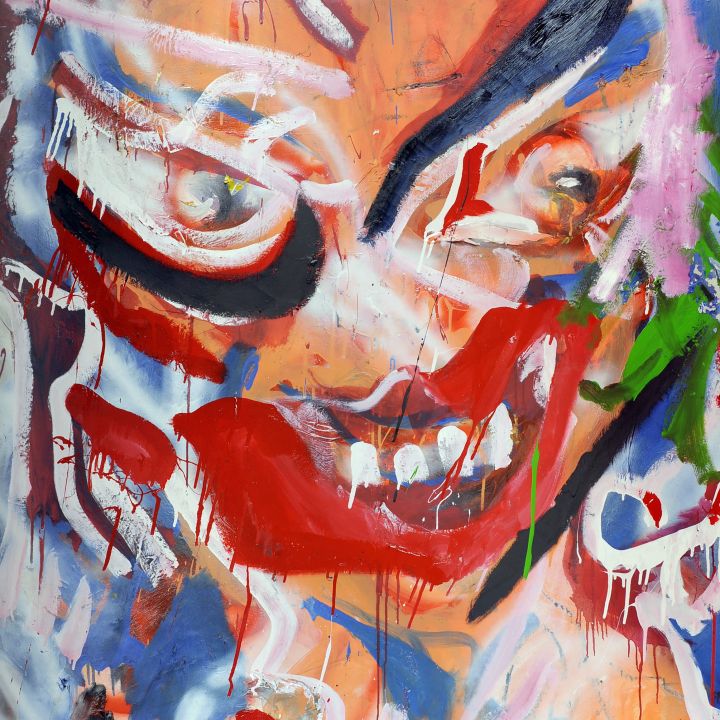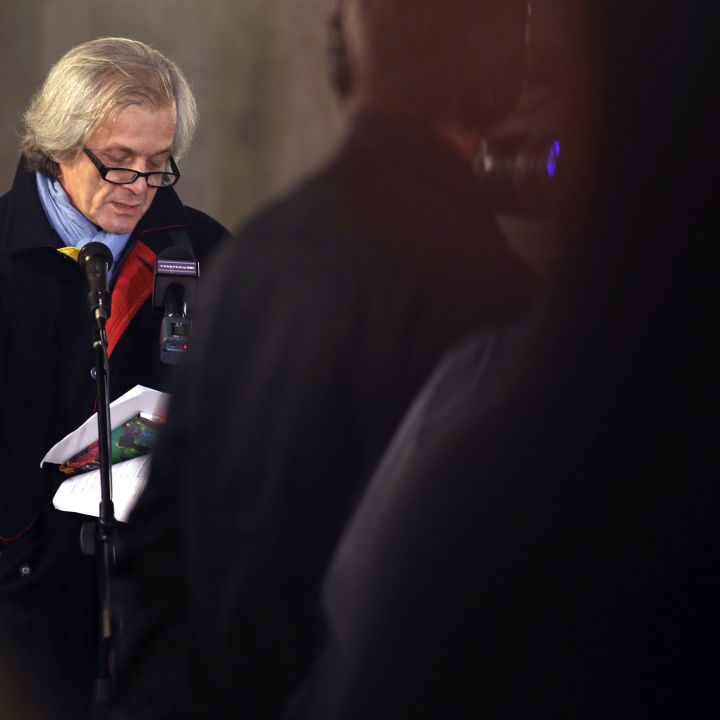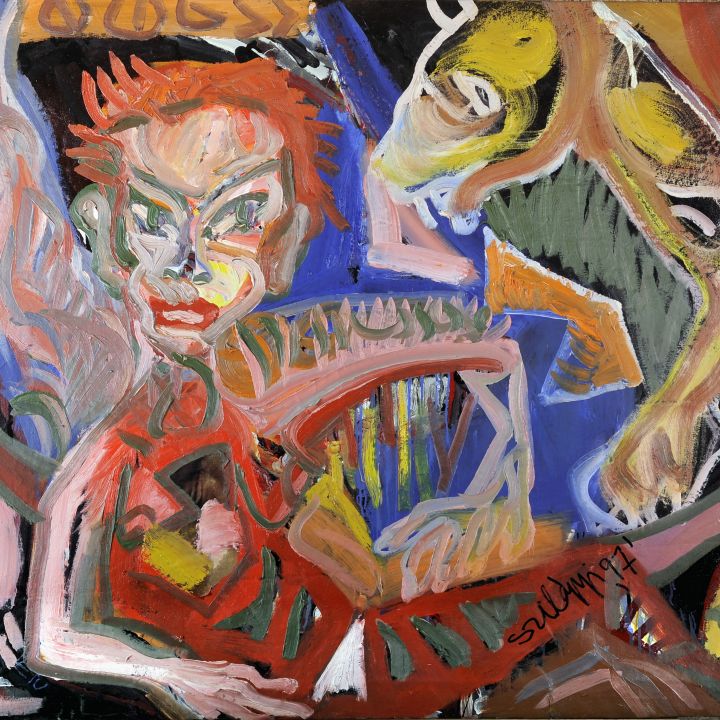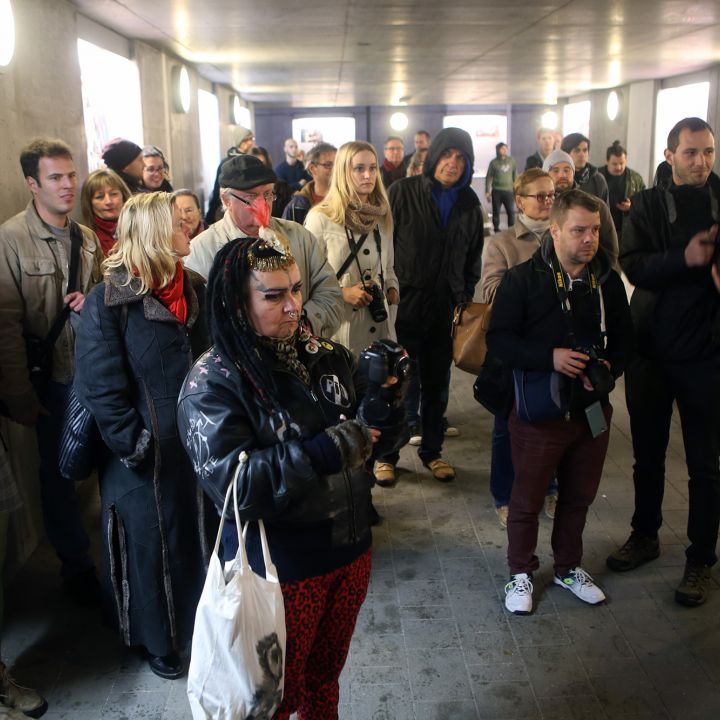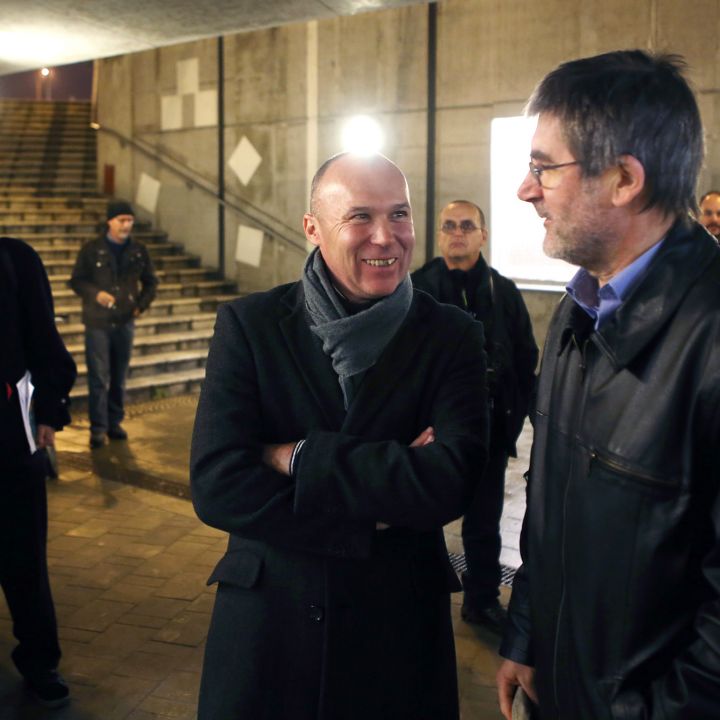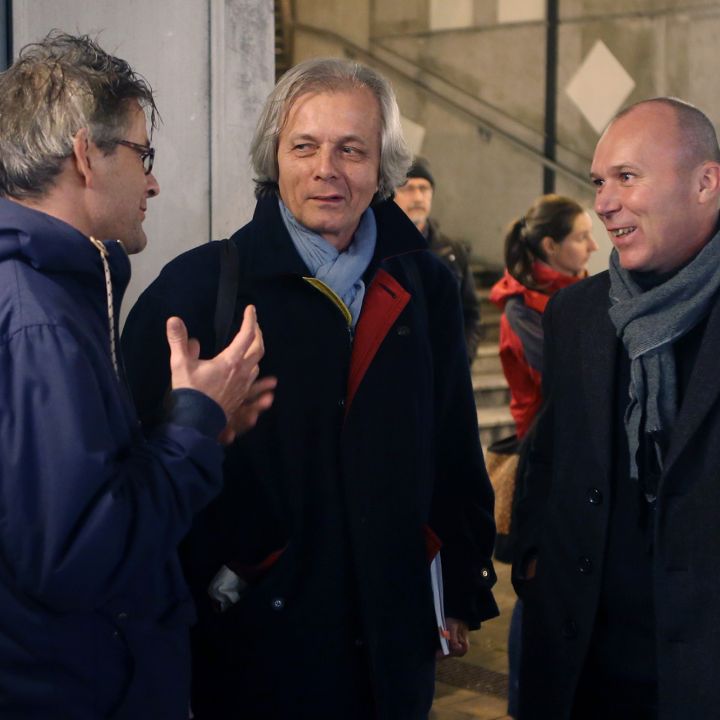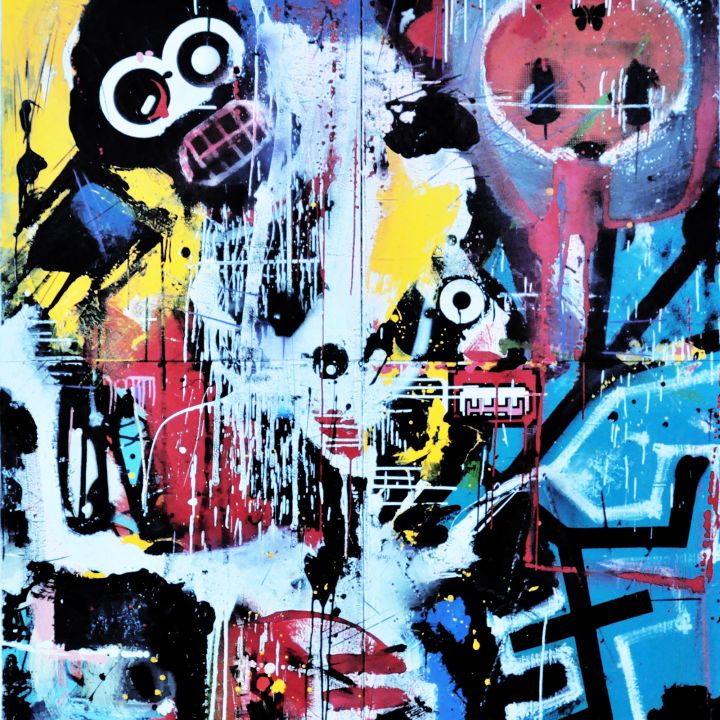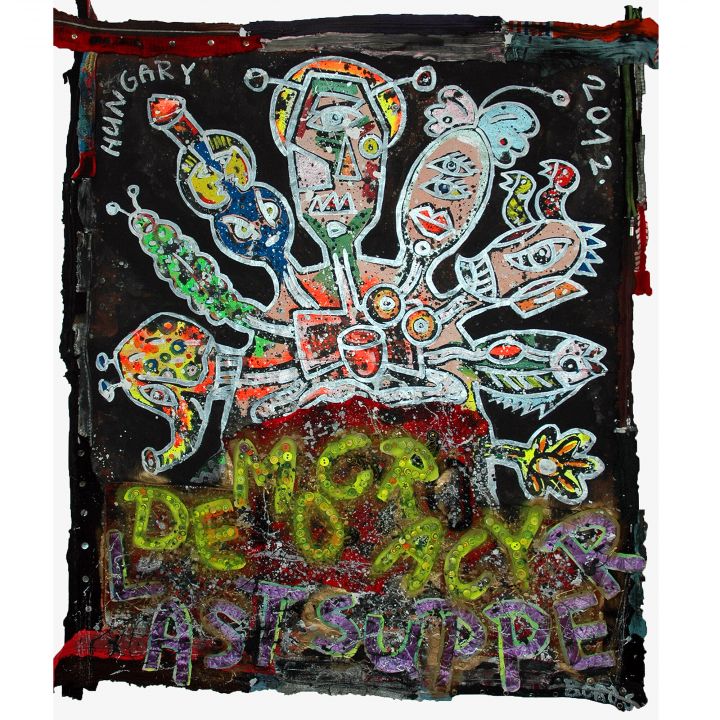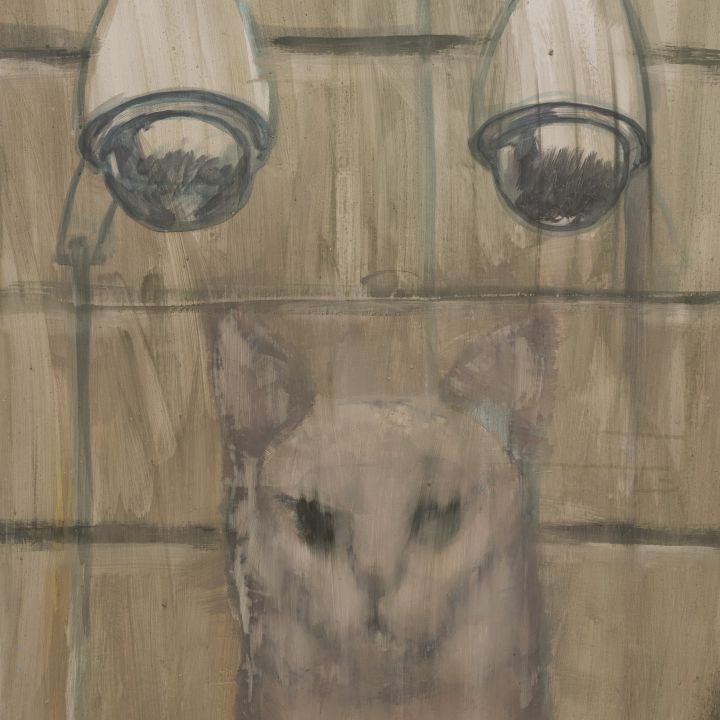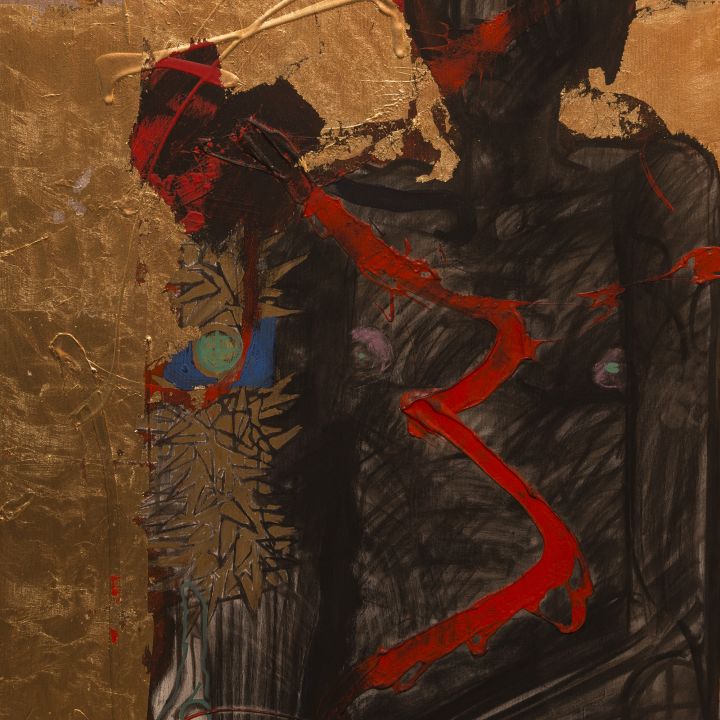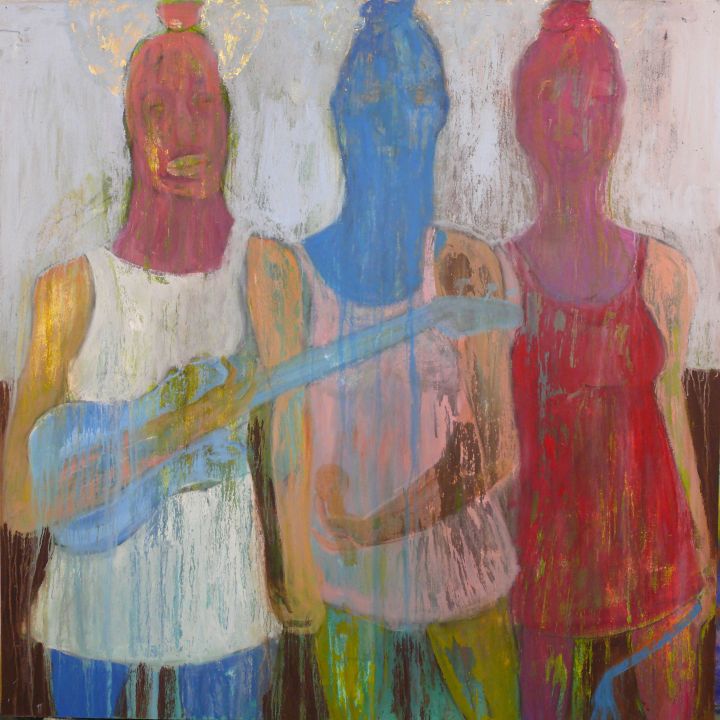László Szilágyi painter (Veszprém, 17 October 1966 - Veszprém, 3 February 2007) László Szilágyi is commemorated in the latest exhibition of the "László Szilágyi Street Gallery", which bears his name, on the 50th anniversary of his birth.
Two works by Lackó Szilágyi, who was known as both a punk and a Veszprém artist and who left many questions after his death were presented at the exhibition Island of Differences and the House of Arts as the gallery's sponsor and director invited seven outstanding contemporary Hungarian artists. The exhibited works are: László Szilágyi (1966-2007) Punkgirl With Love, Punk Heads; Viola Boros (1966) Last Supper; Tamás Fuchs (1962) Observation; Zsolt Gyarmati (1968) UfoInterference Tracking; Gábor Király (1979) Pussy Riot; Tamás Menyhárt Menyus (1966) Lacus; Zoe Szilágyi von Neuwirth (1966) & Brush Ramones (1969) The Year of Punk. The figure of the eighth artist, friend, schoolmate and sculptor László Zeke's Riveted Angel - The Lackó Memorial is a permanent fixture on the north side of the Street Gallery.
The invited artists knew Lackó well and/or are contemporary followers of his conception of art and his interpretation of the world. For those who truly loved and appreciated László Szilágyi's work, it is not unusual to find a critical, rough and wild voice and a passionate, multi-layered visual world. The Island of Differences... "...You have to see the world in process: it's a moving machine, you're in it! It's an organic factor, you are in the middle and you filter everything into yourself. Man is a part, a living part of the universe. Even I used to look for something inherent, a higher region within myself, like an idealist: to step away and leave the world..."
"You take it all in"... Lackó Szilágyi not only said this, he lived and created according to it. He condensed everything into his "stuttering and hyperactive" periods. He condensed everything into his pictures, objects and installations. He used the tradition of painting: the French fauves (savages) from the early avant-garde, the Hungarian technique of wildlife painting, the expressionists. From the post-World War II neo-avant-garde, he was fascinated by the elemental painting of Jackson Pollock; the asamblage method of Robert Rauschenberg, who built a new world out of rubbish, rubbish and found objects; the figurative style of William de Koonig; the star world of the tragically deceased Jean Michel Basquiat, who drew on the subculture of graffiti; the sign system of Keith Haring. He was also inspired throughout his career by the German "Heftige Malerei" - impetuous painting - and Die Neuen Wilden - New Wilds, which burst onto the scene in the late 70s and early 80s....
...He was well acquainted with the work of Markus Lüpertz, A.R. Penck, Jörg Immendorf and was influenced by his masters at the college. He particularly loved the painting of Béla Kondor. But above all he was captivated by the world of "Punk" and considered himself a follower of Punk. He was considered an expressionist artpunk painter by his friends and followers. The term 'punk' was coined by rock music critic Dave Marsh, who first used it in his May 1971 article in Creem magazine; however, it was adopted by many other rock music journalists in the 1970s. Punk is a musical movement that emerged around 1974-1975 with bands such as The Ramones, The Sex Pistols, The Damned and The Clash. The characteristic instruments of punk are a drum kit, one or two electric guitars and an electric bass guitar to accompany the vocals. The punk scene began to emerge in New York around 1974-1976. In 1975, after the break-up of the New York Dolls, their manager Malcolm McLaren returned to London where he opened a clothing store called SEX, which played an important role in the development of the punk clothing style. He also began managing The Swankers, which later became the Sex Pistols.
In the second half of the 20th century anarchism was invested in the melting pot of punk ideas with the theory of a self-organising society and the idea that anarchism was not only necessary but also good for everyone. Punk is not just a musical genre, it is not a stylistic movement, punk is a way of life..."
The biography could be continued at length, which would shed light on and to some extent help us to understand the phenomenon of László Szilágyi, his life, his art. But first of all, let us be clear: László Szilágyi was an educated, skilled artist!
1981-1985 Vocational School of Fine and Applied Arts, Budapest, specialising in leatherwork and painting;
1985-1991 Hungarian Academy of Fine Arts, Budapest, specialising in painting, under the tutelage of Ignác Kokas, Gábor Dienes, Lajos Sváby;
1991-1994 Derkovits Scholarship.
"He could really push the job!" said László Zeke. "Szilágyi was obsessed with art. He worked all the time. He was painting almost every day, on a wide variety of materials, and his financial situation allowed him to paint whenever he could. Mostly he worked to music, painting almost dancing. If he wasn't painting, he was still doing something creative, decorating or drawing, if nothing else, with coffee, leftover hair dye, ketchup, iodine, toothpaste, garlic cream, lipstick or eyeliner. On anything, whether it was a scrap of wood found on the street, scraps of paper, pages of a spiral notebook, tiny little notebooks. Or painted on sheets, or on the walls of your apartment."
This Neo-dada attitude has haunted him all along. Perhaps it is no coincidence that he was born just 50 years after the dada started. His behaviour and dress were considered deviant by the majority of the Alamusians. Few knew that he had long been struggling with his demons, not just social prejudice, pettiness and human frailty. And his illness did not let up. "And some people are fixed on the margins because they will not bargain. But this is a very lonely and extremely difficult condition, which requires great spiritual strength and hardness to endure. When this state meets with inner tension, it is a big explosion. That's what happened with Lacus: he pulled as long as he could, but in the end there was an explosion that brought everything to an end."
"The real question is, of course, was he really a tragic hero? Or just to the narrow fan club? That will probably be for the art lovers of posterity to decide - those who knew him can only be glad that he didn't die at 23, like one of his idols, Joy Division frontman Ian Curtis."
I cannot find the answer. I know that he felt alone a lot of the time, even though he had many people by his side. He was incessantly in need of love, but he was self-righteous with the often tragic fate of the self-righteous, those who pushed themselves to the margins. And in the end he was very lonely, very alone.
Many people shuddered with envy at his outspokenness, his courage, his wildness. Many thought that Lackó Szilágyi would pave the way, that Lackó Szilágyi would tell us, that he would do it for us.
Oh, that singer sang about anything / We knew he was better than we were. /
That his life was worth so much more than we are. / And now we're here, and what we know /
And what we've got inside us, we don't know in English / And it's not written in English."
Details from the opening text by artist László Hegyeshalmi

